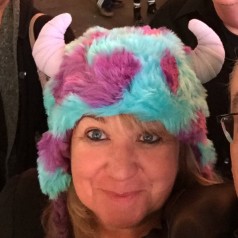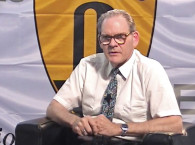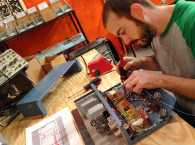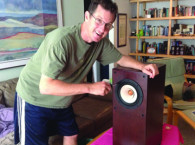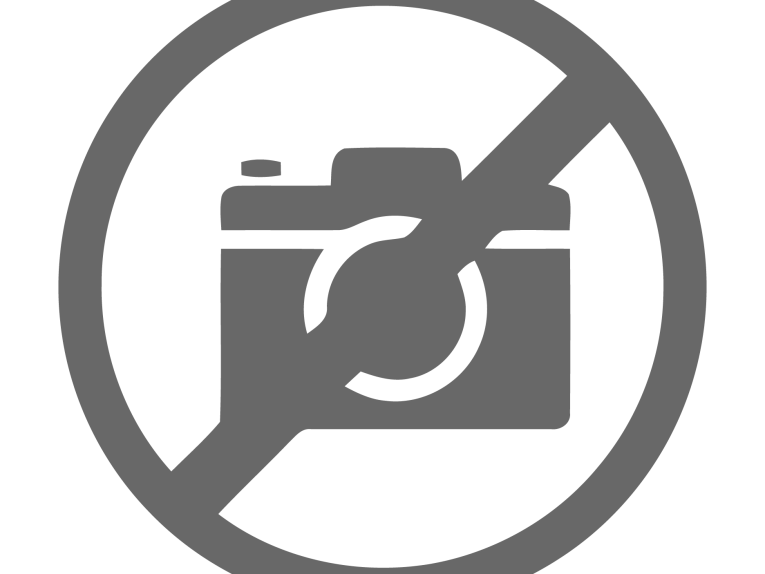
SHANNON BECKER: How did you become interested in audio electronics?
ANDREW ROBERTS: I was very lucky to get involved in the music program in my middle and high school in West Hartford, CT. There was a jazz program in both schools and it worked out that my middle school music teacher, Haig Shahverdian, moved to the high school when I did. That timing was key to my high school experience because I was able to help in the music department and use its facilities with great freedom. The department put on large show every March (40 microphones) with the big band and singers. The school also had a recording studio with a Yamaha RM1608 mixer and a Tascam MS-16 mixer, a bunch of 421s, a pair 451s, a 58, and more.
Starting in my freshman year, I recorded various combinations of musicians at the school, primarily jazz and experimental. For the recording sessions, I had to figure out some basic wiring and build some equipment. Those experiences got me interested in electronics.

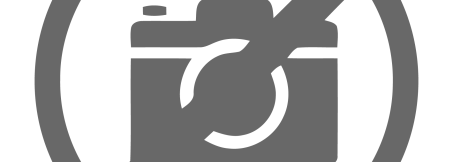
SHANNON: You studied music and technology at New York University. How did your studies prepare you for your future work?
ANDREW: More than anything it was about being in New York. Starting my freshman year in college, I went to studio auctions to buy and sell used recording gear to make money. I had piles of gear in my dorm room and a small bench setup with a tube oscilloscope. I ended up buying some broken things and I tried to fix them to at least make my money back. I remember one of the tech guys at Eventide was very patient while trying to help me fix a H910 harmonizer. I didn’t know enough to fix much on those, but it was a fairly simple power supply problem and he talked me through it.
I was a bit impatient with my college program and took an internship at a studio during my freshman year. That experience taught me that I probably didn’t have the patience or social skills to be a studio engineer. But during the internship, I met a studio technician, John Klett, who was brought in to work on grounding. I did a bunch of the work based on his recommendations. We stayed in touch over the next few months as I started reverse engineering an 1176 compressor.
In 1996, John became a partner in a new shop in the old Sam Ash parts space, which was located at 723 7th Avenue at 48th Street. The shop was called Tech Mecca and incorporated a few different entities. Manhattan Audio was on the musical instrument repair side, this was the height of Alesis Digital Audio Tapes (ADATs) and they fixed a lot of those, as well as keyboards, mini studio mixers, and digital gear. John worked on all kinds of analog gear—esoteric gear, tape machine rebuilds, console rebuilds, custom projects, and I got to see a lot of equipment in a short period of time.

500-series microphone
preamplifier module
designed to work in
standard 500-series
racks such as the
Purple Audio Sweet Ten.
SHANNON: How did your audio repair experience help you with the work you do today?
ANDREW: I was able to get paid to take apart and examine a lot of gear. It was great because I was able to see how different companies put together a variety of design elements. I could see where they made their design compromises and how they held up over the years. With design compromises (e.g., weight, heat, size, and cost), some of them are deliberate and some are defined by available parts or the technology. Case designs, physical layouts, components choices, and what happens when they are subjected to all types of use and environments provide a lot of information about the products.
SHANNON: Tell us about your company Purple Audio (www.purpleaudio.com). How did it begin? And where did the name come from?
ANDREW: In 1996, I had built my first prototype of the 1176 compressor. It was built with two others under the classic audio name, but this arrangement soon fell apart. With a product ready, I printed out a bunch of single-word names on stickers and stuck them on front panels. Purple was among them and it looked the most interesting. I showed the first MC76 units (1176 with Roman numerals for 1100) at the Audio Engineering Society (AES) show in 1997.
By November of 1997, I needed more space than was available to me at Tech Mecca, so I found a large loft in Long Island City, Queens, by the base of the 59th Street Bridge. The building was 1930s brick, the first floor had been a bar/restaurant and the second and third floors had been a theatre. In the late 1970s, it was converted into a club called Exile. The building still had that sign on it. It was a work/live space and had about 3,000 ft2 of office/shop space on the second floor and a 1,500-ft2 apartment with built-in balconies. We had a chain hoist off the second floor to get big stuff in. Over the years, we set up a studio in that space and did a lot of console and tape machine rebuilds as well as bench repair. Eventually Purple Audio shared that space with Coral Sound, which is owned by Matt Marinelli. John Klett also used that space for some of his projects.
SHANNON: In 1997, Purple Audio introduced the MC76. Tell us about this product’s evolution over the years.
ANDREW: After the 1997 AES show, we started shipping the MC76. CN Fletcher at Mercenary Audio was the first one to get behind Purple Audio and we started setting up distribution around the world. After the New Universal Audio started making the MC76, we worked on some other projects. Then, we introduced the MC77 limiting amplifier, an updated MC76 with an identical signal path plus some new features, a buffered meter showing I/O, a true bypass, a front-panel stereo link, and an insert loop for keying.
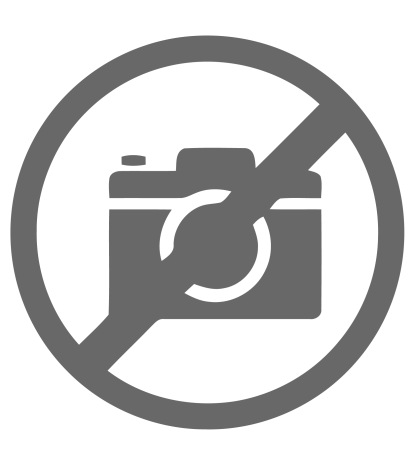
SHANNON: What kind of audio products do you offer?
ANDREW: The MC77 was followed by eight 500 modules, two microphone preamplifiers—the Biz MK and Pants, the Action Compressor, the Odd and the Tav Inductor EQs, the Lilpeqr program equalizer, the Moiyn mixer module, and the Cans headphone amplifier. We also make the Sweet Ten, a professional-grade 10-slot rack with an internal power supply and four I/O per slot. We have also built a couple of custom consoles and master sections for retrofit.

10-band
nductor-based
graphic EQ.
SHANNON: Your website lists several people from whom you’ve received design and consulting input Did anyone serve as an inspiration to you?
ANDREW: All of those guys helped in various ways in the creation of Purple Audio. Ed Anderson, now at Apple (www.apple.com), Jens Jungkurth now Eisen Audio (www.eisenaudio.com/projects/) and doing design work for NonLinearAudio.com and Awtac, both did assembly work at some point and later each did design work.
Ed designed the Odd and the TAV and Jens designed the Lilpeqr. Jens still does some design consulting for Purple Audio.
Matt Marinelli started working for Purple Audio doing wiring and console work. He started his own thing in 1999, from then on we shared the Exile shop until I left in 2007. Matt Marinelli is now Coral Sound (http://coralsound.com) and Exile Studios (www.exilerecording.com). Matt and I continue to work together on projects. We are currently working together on implementing console master sections as custom retrofits.
Noah Murphy started doing assembly for Purple Audio at the beginning and he is now working on various recording and music projects (www.noahmurphy.com). John Klett is a long-time friend and mentor and he is always working on interesting things (http://technicalaudio.com/techmecca/index.html). Dan Zellman is a great designer and repair technician. He did various project for and with Purple Audio, and he is currently running a service shop out of Sear Sound.
SHANNON: In 2007, you moved Purple Audio from New York to Pennsylvania. Why did you relocate and how has the new location impacted your company?
ANDREW: I was ready to get out of New York. The Exile shop was an asset but also a distraction. Coral Sound stayed in the space, which meant moving was fairly painless. Getting out of New York meant no more repair work but there was also a lot less distraction and lower overhead. New York was a great place to get started but everything is harder and more expensive there. I have been able to do a lot more design work and design a lot of new products in the years since leaving.

ith the Purple Audio Sweet Ten. The Moiyn works in slot 9 of the
Sweet Ten rack and turns it into a 8 × 2 mixer.
SHANNON: In 2011, you purchased an historic hose company building. What made you take on a building restoration project? How will this new facility affect your business?
ANDREW: When I moved to Pennsylvania, I bought a house and restored it. I was also looking for a shop building but I settled on renting for a bit. When the Marion Hose Company, an 1885 brick firehouse attached to the Mauch Chunk Opera House, came on the market, I felt that the property would be the best long-term plan for Purple Audio. We gutted the entire 4,000-ft2 building and pulled out more than 150,000 lb in debris.

I am about half done with the restoration so we are currently occupying the second floor with the shop and a temporary recording setup—30 Biz preamplifiers into an Antelope Orion. When the project is complete, the first floor will house a proper control room, an isolation booth, and a cafe. The building is attached to the Mauch Chunk Opera House, a 400-seat theater with beautiful acoustics built in 1881. There is a production company that has been putting on music shows in the venue for 10 years and Purple Audio is working with them, recording all their shows, and trying to turn the venue into a destination live-recording venue.
We’re only 2 h from Manhattan and we have a unique setup with a live room all the performers love to use. It is a great way to get back into recording. Every Friday and Saturday afternoon a new band shows up and we do a sound check. I work on sounds and get a rough mix going for the night. A couple hours later they do their show and I capture it next door. I built a three-way splitter for the stage microphones and have a couple pair of Avensons (www.avensonaudio.com) for room microphones. Currently, we are recording the shows on spec and offer a free rough mix with the option to purchase all the files. This work as an R&D room has meant I get to use all the gear on a regular basis, which has lead to some new design inspirations and some changes to older products.

SHANNON: Can you tell us about Purple Audio’s latest projects?
ANDREW: The product that is shipping next is a 1RU 10 Channel mixer designed to make consoles and sidecars out of 500 racks/modules. The MFTwenty5 has mute/solo pan per channel, the channels are mono or stereo enabling 10 × 2 up to 20 × 2 mixers with one unit and larger systems with multiple units. The Pan switches to a Balance in stereo mode and the internal fader becomes an auxiliary send with the optional external fader unit. There is also an optional meter unit. This box is digitally controlled switching with discrete audio path.
The other unit that has reached the end of the design process is a new iteration of our console master sections for use with the MF series and retrofit into other consoles. These products are designed in cooperation with Jon Ulrigg (www.discretedigital.com). He contributes embedded design consulting and software development. 


